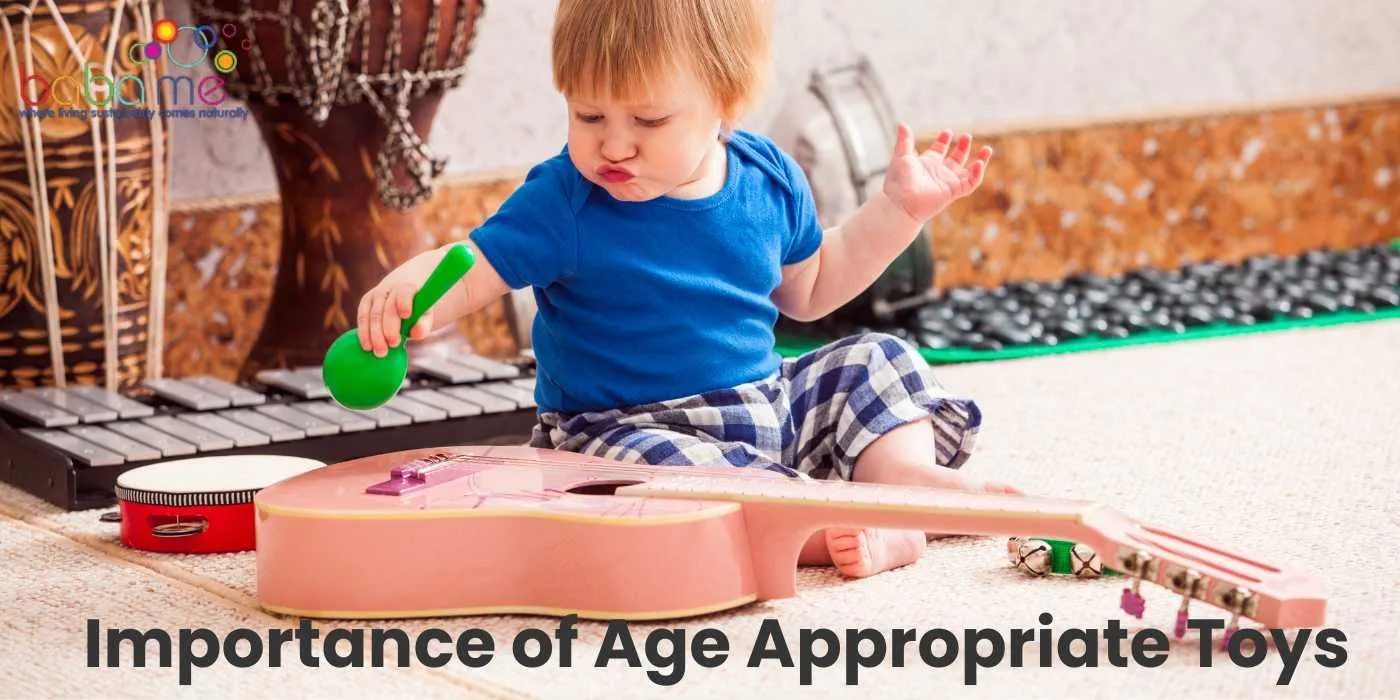Toys are not just about entertainment, they are vital tools that contribute to a child’s developmental growth. Selecting age-appropriate toys can enhance cognitive, motor, and emotional skills.
From birth to five years, each age presents a unique phase in development where specific types of play can foster learning and skill-building.
This guide will help you navigate the world of developmental toys, ensuring that your child’s playtime is both fun and beneficial.
Key Takeaways
Understanding child development toys is crucial to making informed decisions about what to buy for your child.
Toys can help children develop various skills, such as cognitive, motor, and social-emotional skills.
Choosing the right toys for your child’s age and developmental stage is essential to ensure that the toys you select are safe, age-appropriate, and beneficial for their growth.
Children’s Toys for Development by Age Quick Summary
| Age Range | Suggested Toys for Development |
|---|---|
| 0-3 months | Rattles, Soft Toys, Unbreakable Mirrors, Mobiles |
| 3-6 months | Teething Toys, Soft Blocks, Squeeze Toys, Musical Toys |
| 6-9 months | Stacking Cups, Activity Boards, Soft Dolls, Cloth Books |
| 9-12 months | Simple Puzzles, Push and Pull Toys, Large Blocks |
| 1-2 years | Picture Books, Bath Toys, Nesting Blocks, Simple Musical Instruments |
| 2-3 years | Pretend Play Toys (Kitchen sets, Tool sets), Simple Puzzles, Tricycles, Art supplies (Crayons, Paper) |
| 3-4 years | Construction Blocks (e.g., Legos), Dress-up Clothes, Simple Board Games, Storybooks |
| 4-5 years | More Complex Puzzles, Bicycles with Training Wheels, Action Figures/Dolls, More Complex Board Games |
Understanding Child Development Toys
Developmental toys are designed to help children learn new skills and reach important milestones. By providing age-appropriate toys, you can help your child develop their cognitive, physical, and social-emotional abilities.
For example, toys that encourage crawling and walking can help your child develop their gross motor skills. Toys that require problem-solving or fine motor skills can help your child develop their cognitive abilities. And toys that encourage sharing and cooperation can help your child develop their social-emotional skills.
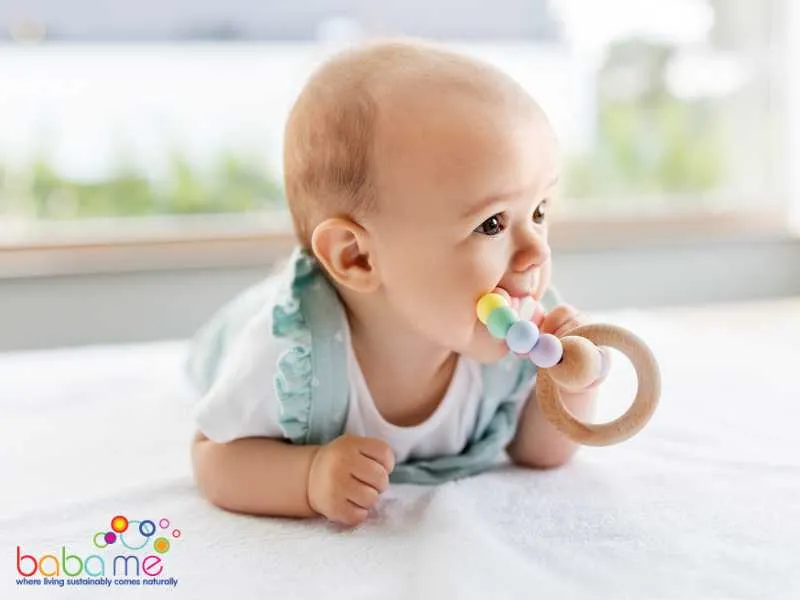
Age Appropriate Toy Examples
There are many toys available in the market, but it’s important to choose toys that are appropriate for your infant’s age.
Toys for Birth Through 6 Months
For young infants, soft toys are ideal as they are easy to grasp and don’t pose any risks. Music is also a great way to stimulate their senses, and toys that play lullabies or nursery rhymes can be very soothing. Here are some toys for babies that are perfect from birth through 6 months:
Rattles: These simple toys are great for stimulating your infant’s senses. They come in different shapes, sizes, and colors, and some even have mirrors attached to them.
Soft blocks: These are perfect for little hands to grasp and play with. They come in different textures and colors, which can help with your infant’s sensory development.
Squeeze toys: These toys are great for developing your infant’s hand-eye coordination. They come in different shapes and sizes and can be squeezed to make a noise.
Textured balls: These are great for your infant’s tactile development. They come in different textures and sizes, which can help with their sensory development.
Mirror toys: These toys are great for your infant’s visual development. They come in different shapes and sizes and can be used to help your infant learn about their own reflection.
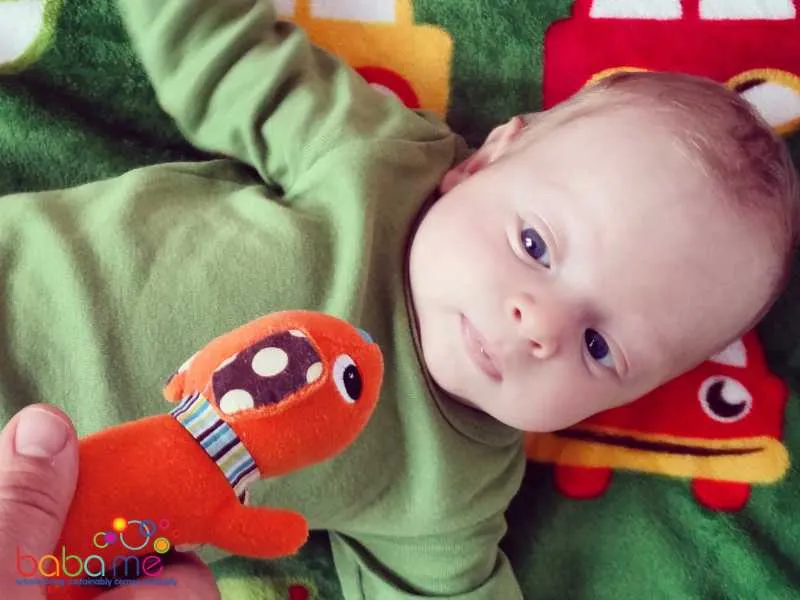
Toys for 7 to 12 Months
As your infant grows, they will become more curious and want to explore their environment. Toys that encourage movement and exploration are great for this stage. Here are some toys that are perfect for infants from 7 to 12 months:
Rings and stacking toys: These toys are great for developing your infant’s hand-eye coordination and problem-solving skills. They come in different sizes and colors and can be stacked or linked together.
Blocks: These toys are perfect for exploring cause and effect. Your infant can build towers and knock them down, which can help with their cognitive development.
Balls: These toys are great for encouraging movement and exploration. They come in different sizes and textures, which can help with your infant’s sensory development.
Music toys: These toys are great for encouraging your infant to move and dance. They come in different shapes and sizes and can play different types of music.
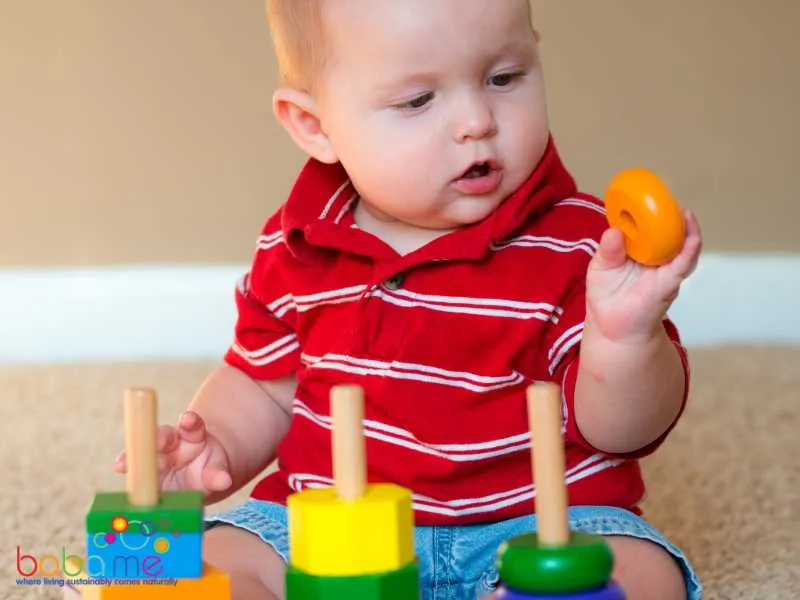
Toys for 1-Year-Olds
At this age, your child is developing their motor and language skills. They are also starting to understand cause-and-effect relationships. Here are some toys that can aid in their development:
Board books: Simple board books with bright pictures and simple text can help your child develop their language skills.
Push and pull toys: Toys that your child can push or pull around the house can help them develop their gross motor skills.
Stacking blocks: Blocks with different shapes and textures can help your child develop their hand-eye coordination and fine motor skills.
Shape sorters: Shape sorters can help your child learn about shapes and develop their problem-solving skills.
Ride-on toys: A tricycle or a ride-on toy can help your child develop their balance and coordination.

Toys for 2-Year-Olds
At this age, your child is becoming more imaginative and developing their social skills. They are also starting to understand numbers and shapes. Here are some toys that can aid in their development:
Board games: Simple board games with large pieces can help your child learn about taking turns and following rules.
Construction sets: Toys like building blocks or Duplo sets can help your child develop their creativity and imagination.
Pretend play toys: Dolls, puppets, and play kitchens can help your child develop their social skills and imagination.
Musical instruments: Simple rhythm instruments like shakers or drums can help your child develop their sense of rhythm and music appreciation.
Sensory toys: Toys with different textures, lights, and sounds can help your child develop their senses and cognitive skills.
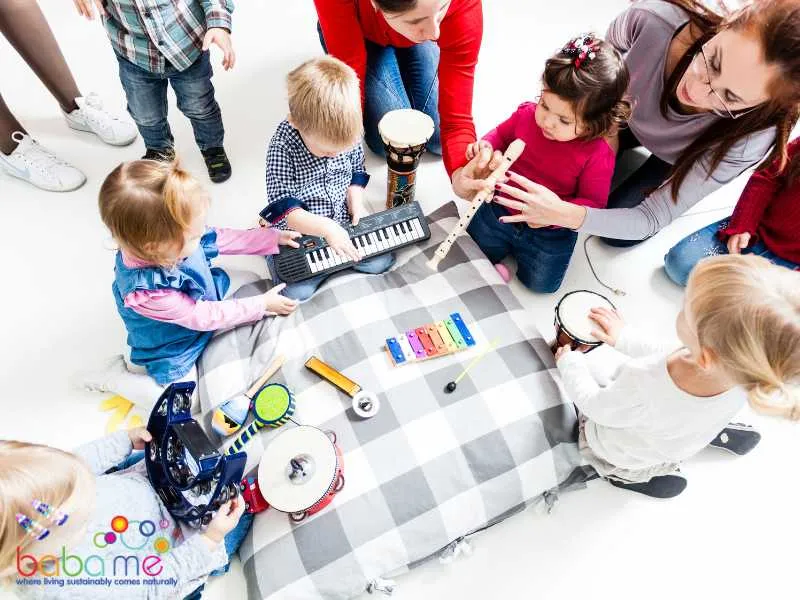
Toys for 3-Year-Olds
As your child hits the age of three, their motor skills, language development, and imagination continue to grow. They start to engage more in pretend play and enjoy activities that mimic real-life tasks. Here are some toy suggestions:
Role-play toys: At this stage, kids love to mimic adults. Toys like play kitchen sets, dolls, and tool sets can encourage imaginative play and also help children understand the world around them.
Puzzles: Simple puzzles can be a great way for your child to develop problem-solving skills. They also help with hand-eye coordination and fine motor skills.
Art and craft supplies: Providing your child with modeling clay, finger paints, and other art supplies can encourage creativity and develop fine motor skills.
Interactive books: Books with flaps to lift or textures to feel can engage many kids and encourage a love for reading at an early age.
Outdoor toys: Encourage screen-free play and physical activity with toys suitable for outdoor use, like balls, tricycles, or sandbox toys.
Educational games: Games that involve recognizing and matching different body parts can be both fun and educational as well as help with their emotional development. These games can help your child in their language development and understanding of body awareness.

Safety Considerations
While developmental toys can be a great way to support your child’s development, it’s important to keep safety in mind. Here are some safety considerations to keep in mind when choosing toys for your child:
Check for age-appropriateness: Make sure the toy is designed for your child’s age and developmental stage.
Avoid choking hazards: Look for toys that are too small for your child to swallow or choke on, such as small parts or balls.
Check for sharp edges or points: Make sure the toy doesn’t have any sharp edges or points that could harm your child.
Avoid toys with strings or cords: These can pose a strangulation hazard.
Look for non-toxic materials: Choose toys made from non-toxic materials that are safe for your child to put in their mouth.
FAQS on Age Appropriate toys
What toys can help a child’s development?
Toys that promote motor and sensory skills, such as stuffed animals, classic toy blocks, or a play kitchen, can greatly assist a child’s development. Musical toys can stimulate auditory processing, while nesting cups can foster problem-solving abilities. As a child develops, educational and science toys can engage their curiosity and foster cognitive growth, as well as help with their gross motor skills.
How do toys promote development?
Toys encourage a child’s development by helping them explore their surroundings, learn new skills, and interact with others. For instance, a baby learning to grasp objects might benefit from a rattle or other baby toys suitable for their age group. As kids grow, toys that involve turn-taking can enhance social skills.
What toys do pediatricians recommend?
Pediatricians recommend age-appropriate toys that keep a child engaged without overwhelming them. For babies, this might include items that stimulate their senses, such as soft musical toys or toys that promote tummy time. For older babies and toddlers, pediatricians often suggest toys that stimulate imaginative play and language development, such as dolls, toy cars, or a play kitchen.
What toys encourage visual development?
Educational Toys with bold colors and contrasting patterns can enhance visual development in babies. Toys that involve finding hidden objects can improve visual tracking. Games of peek-a-boo with a parent or a soft toy can also support visual attention span.
What is the definition of age appropriate toys?
Age-appropriate toys are ones that match a child’s developmental stage and abilities. These toys meet the safety needs of the child’s age group and engage their current interests and skills. For instance, toys for babies might include items to grasp, squeeze, or shake, while toys for toddlers in their toddler years might involve smaller objects and toys that promote standing independently and taking a few steps.
As kids grow, age-appropriate toys might involve more complex problem-solving and imaginative play. Educational toys work best when they are age and skill appropriate.

